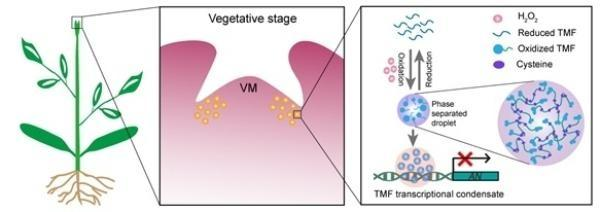About 2.4-3.8 billion years ago, the earth began to produce oxygen, and the atmosphere gradually changed from an anaerobic environment to an oxygen-rich environment. Natural selection promoted the survival advantage and life evolution of oxygen-consuming organisms. Oxygen-consuming metabolism increases the energy metabolism efficiency of multicellular organisms, but high-frequency electron transfer and energy conversion generate chemically active and highly oxidative reactive oxygen species (Reactive Oxygen Species, ROS), including superoxide anions (O2· -), hydrogen peroxide (H2O2), hydroxyl radicals ( OH) and nitric oxide (NO), etc. Excessive accumulation of ROS in cells can lead to oxidative damage to DNA and changes in protein behavior, resulting in cytopathic and death. Therefore, reactive oxygen species are considered a danger signal. The vigorous energy metabolism during the normal growth and development of multicellular organisms will generate a large amount of ROS. In addition to their own scavenging mechanisms, have they evolved a more “energy-saving” method to turn waste into treasure and turn danger signals into beneficial ones? Plants have difficulty moving as freely as animals to avoid various risks. Have they evolved more flexible and “smart” strategies to navigate these red flags?

On February 25, Nature Chemical Biology published a paper titled ROS regulated reversible protein phase separation synchronizes plant flowering online (DOI: 10.1038/s41589-021-00739-0). The research results of Xu Cao’s group and collaborators at the Institute of Genetics and Developmental Biology, Chinese Academy of Sciences are reported on the control of stem cell fate by ROS-induced protein phase separation. The study found that H2O2 also accumulated in the peripheral area of normally growing tomato shoot apical meristem, which could act as a “beneficial” developmental signal to regulate shoot apical meristem maturation and tomato flowering time in a TMF-dependent manner. Tomato shoot apical meristem maturation is a precise programmed developmental process. TMF encodes a transcription factor containing a conserved cysteine (Cysteine), which ensures orderly flowering by inhibiting shoot apical meristem precocious maturation. conduct. TMF is a key gene that controls the fate of stem cells at the shoot apex and ensures the temporal development of meristems. After it is mutated, tomato blooms prematurely, and the inflorescence changes from multiple flowers to single flowers. TMF was specifically expressed in the peripheral region of tomato shoot apical meristem, which partially overlapped with the location of H2O2 accumulation, and the TMF protein expressed in this region showed a speckled localization pattern (Puncta) in the nucleus. Further research found that the cysteine of TMF protein can be oxidized by H2O2 accumulated here to form intermolecular and intramolecular disulfide bonds, and the disulfide bonds promote the aggregation of the naturally disordered region (IDR) of TMF, Enhanced multivalency, which drives protein phase separation, targets the Floral meristem differentiation gene ANATHA (AN), forms a transcriptional condensate, and precisely regulates the tomato shoot apical meristem Ripe (Meristem maturation) and bloom.
This article is the first scientific paper to report the mechanism of protein phase separation based on the crop model. The study found a new protein phase separation mechanism: stem cells use ROS, a by-product of energy metabolism, as an oxidative signal, inducing transcription factor disulfide bond formation and multivalent interactions in natural disordered regions, resulting in a “dual driving force” to trigger phase separation. For the first time, this study established molecular connections between three important biological phenomena and scientific issues, namely reactive oxygen species signaling, protein phase separation and stem cell fate determination, elucidated the mechanism, and systematically verified the biological function, which is an important progress in this field; for the first time Linking chemical biological signals and protein behaviors directly with the temporal transcriptional regulation of plant development, updating the understanding of the fate-determining mechanism of stem cells in plant shoot tips, and advancing the understanding of developmental biology to the level of biophysics and chemical biology, Provides a paradigm for dissecting complex biological mechanisms using interdisciplinary knowledge.
Huang Xiaozhen, a postdoctoral fellow in Xu Cao’s research group, and Chen Shudong, a doctoral student, are the co-first authors of the paper, Xu Cao is the corresponding author of the paper, and Li Pilong, a researcher at Tsinghua University, is the co-corresponding author of the paper. contribute. This work was guided and assisted by academicians of the Chinese Academy of Sciences Wang Zhizhen and Li Jiayang. The research work is supported by the “From 0 to 1” original innovation project of the Basic Frontier Scientific Research Program of the Chinese Academy of Sciences, the Strategic Pilot Science and Technology Project of the Chinese Academy of Sciences (Class A), the National Key Research and Development Program, the National Natural Science Foundation of China and the State Key Laboratory of Plant Genomics.
